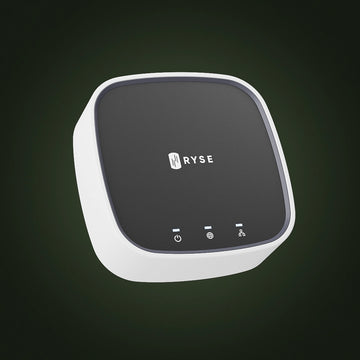Sleeping in sounds like a luxury until you wake up groggy, disoriented, and with a headache that won’t quit. While most people associate sleep problems with not getting enough, too much sleep can also lead to issues, especially if your environment isn’t supporting natural wake cues.
In this blog, we’ll explore why oversleeping can cause headaches, how poor light regulation plays a role, and what you can do to wake up refreshed instead of foggy.
How Oversleeping Can Trigger Headaches
It might seem counterintuitive, but extra sleep doesn’t always mean better rest. Here’s how too much sleep can backfire:
1 Sleep Inertia
When you sleep longer than your body needs, especially past your typical wake time, you may wake up during a stage of deep sleep. This can leave you with "sleep inertia" , a state of grogginess and cognitive sluggishness that can include headaches.
2 Disrupted Circadian Rhythm
Your body thrives on routine. Oversleeping throws off your circadian rhythm, which regulates not only sleep cycles but also hormones, digestion, and mood. That internal confusion can result in physical symptoms like tension or migraine-like headaches.
3 Poor Light Regulation
If you’re oversleeping in a dark room or relying on blackout curtains with no automation, your body may not receive the natural light signals it needs to reduce melatonin and trigger a healthy wake-up process. That hormonal lag can lead to low energy and head tension.
Smart Sleep Environment Fixes
Waking up headache-free starts with syncing your body to natural rhythms — and your bedroom environment plays a key role in that.
1 Automate Your Wake-Up Light
Use RYSE SmartShades to gradually introduce sunlight into your room in the morning. This helps:
-
Suppress melatonin naturally
-
Cue your circadian rhythm to “wake mode”
-
Reduce sleep inertia and headache risk
Set your smart shades to open slowly around your ideal wake-up time, allowing light to gently stir your system rather than shock it.
2 Maintain Consistent Wake Times
Instead of sleeping in late on weekends, try to keep your wake-up time within 30–60 minutes of your weekday routine. This keeps your sleep-wake cycle aligned and reduces the need to oversleep.
3 Use Smart Alarms or Voice Routines
Combine light automation with gentle alarm tones, smart speakers, or a “Good Morning” voice routine that gradually activates:
-
Lights
-
Sounds
-
Window shades
-
Even a light temperature adjustment
Together, this creates a natural and gentle wake-up environment that helps avoid the fog and pressure of abrupt awakenings.
Extra Lifestyle Tips
-
Avoid heavy meals or alcohol late at night, which can fragment sleep and lead to oversleeping
-
Skip long weekend naps that interfere with night sleep quality
-
Wind down properly so your body gets into deeper sleep earlier, avoiding the urge to sleep late
-
Limit caffeine late in the day to avoid delayed sleep onset
Yes, too much sleep can cause headaches, especially when your environment doesn’t support a smooth transition between rest and wakefulness.
The solution isn’t just sleeping less, it’s sleeping smarter. With tools like RYSE SmartShades, consistent sleep timing, and natural light cues, you can wake up feeling alert, balanced, and pain-free. Because good mornings start with the right kind of night and the right kind of light.
Frequently Asked Questions (FAQs)
1. Is sleeping more than 8 hours always bad?
Not necessarily. Some people naturally need more sleep. But if it’s inconsistent or leads to headaches, it may be a sign of poor sleep quality.
2. Why do I feel worse after sleeping 9+ hours?
Oversleeping can disrupt your circadian rhythm and increase the chances of waking up during deep sleep, leading to grogginess and headaches.
3. Can blackout curtains contribute to oversleeping?
Yes, if they block morning light entirely and aren’t automated. Without light cues, your body may struggle to know when to wake up.
4. How does RYSE SmartShades help with better wake-ups?
They automate natural light exposure, helping reduce melatonin, support circadian alignment, and ease the transition into your day.







